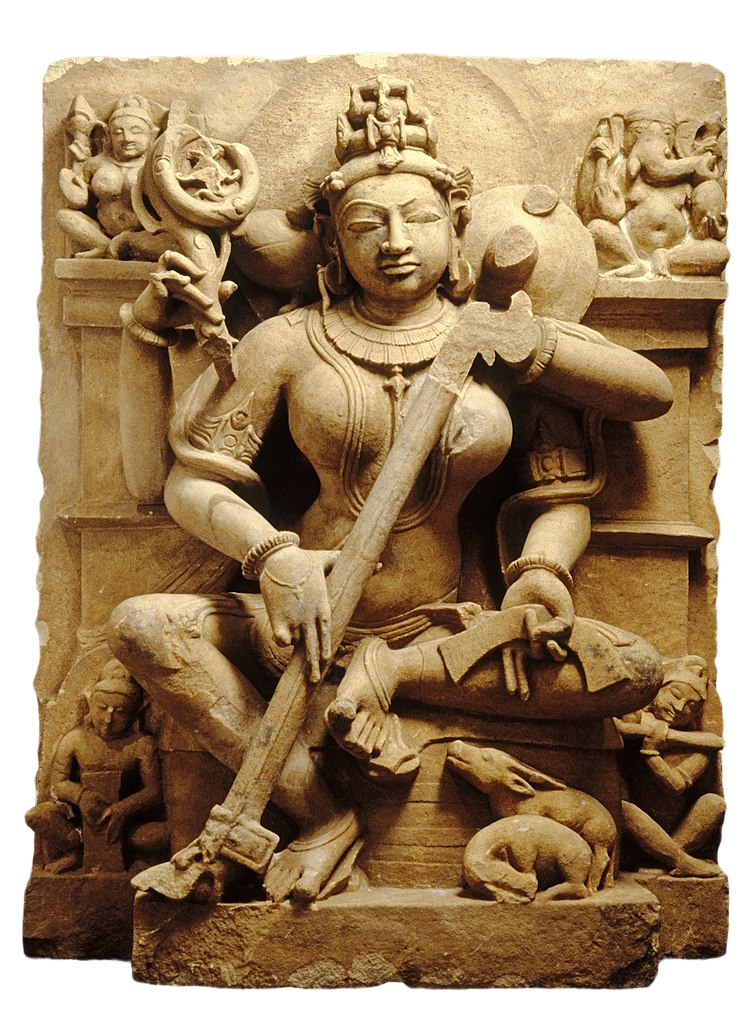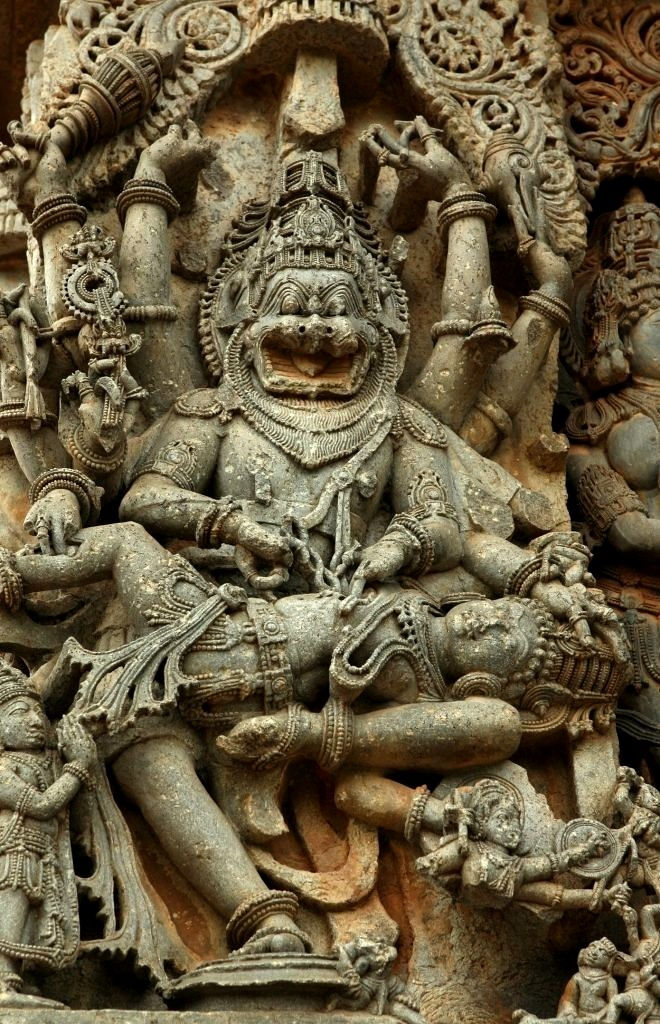Part 1
I felt the necessity to unfold the secrets of this critical segment of artistry to get it back again because it has been dimming away due to the inaccessibility of sufficient related books. Some of the information is still available in Sanskrit and must be translated. It will be challenging; however, I'll try to the best of my ability.
Before the discussion, we need to know about Indian spiritualism and related myths from the Aryan civilization governing in that primordial era before the birth of Christ. The debate will move simultaneously with the grammatical aspect of Indian sculpture and related spiritual concepts to assume those ancient sculptures widely and deeply.

Indian sculpture is based on rhythms, balance, modeling, proportion, and anatomy, primarily followed by the grammar book of painting I discussed earlier in my blog. An anonymous author wrote the treatise on the grammar of painting far before the second Century, which Vatsayan later found in a tattered condition. Indeed, most of that scripture was demolished, which Vatsayan recovered, rewritten, and included in his world-famous treatise on love and eroticism, Kamasutra. Batsayan confessed he didn't author the scripture; he only had it in his Kamasutra to preserve the manuscript. That ancient scripture of painting denoted six aphorisms. The author precepted that an artist should follow those aphorisms to make a successful creation. Indeed, those aphorisms have been conveying their highest value even in modern art of the contemporary era. Only there are a few changes I noticed in the scripture of Indian sculpture that might be influenced by Indian Hindu spiritualism and beliefs.
The ancient scripture of Indian sculpture was "Saraswati Shilpa," where the unknown author proclaimed a doctrine of observing an object. He stated that artistic observation should not only be related to the outer shape of a thing; instead, it should incorporate the underside of an object, accordingly. That's why the Indian concept of human anatomy contradicts the European standard. It was also related to the characteristic value instead of mussels, bones, and skeletons of the human figure, and this is why that unknown author precepted such a direction for Indian sculptors.
Here, we must remember that in India, the purpose of making sculptures was not only for practicing artistry; most statues were created to teach ordinary people about Hindu spiritualism and to grow divinity in the human soul. Therefore, it is easy to guess that the structure of a human figure may not be similar to the standard outer shape we usually recognize. The purpose behind such a figurative form was to superimpose the divine nature in the sculpture, which is hidden in the human soul and makes it noble.
Besides that, the author also felt the necessity to put the cruelty of the human soul in the sculpture. Human society is not only built with good people, but there are also some evils, and the contradiction between good and evil is eternal. Suppose we scrutinize the scriptures of several spiritual communities around the world. In that case, we can notice a common thing, which is, - the contradiction between good and evil. Therefore, it was necessary to have a standard rule to make a sculpture of a devil or demon. Moreover, Hindu spiritualism believes that for a specific reason, God may change his figure from a compassionate to a deadly form to establish chivalrous judgment and rescue his devotees. Where teaching common people was the primary goal of making a sculpture, there was a requisition to settle down a suitable structure for such a different reason.
Based on the Indian theory of scripture, the unit of measurement of the human body functioned as "TAL," similar to or nearest to the word "Proportion." The "Tal," or the unit of measurement, was not applicable in all manners; instead, it depended on the figure's mood. If the sculpture were about ordinary people, the Tal would not be the same as God or a spiritual person.
In India, besides God, we can see many figures of Yaksha, Kinnara, Asura, Rakshasa, and so on. Those were not composed in the same 'Tal' or proportion because they are not noble characters.
In Western sculpture, we use the face (from head to chin) as a unit of a figure and divide it into seven parts to measure the rest of the Constitution. It is the best way to make a stunning sculpture. Meanwhile, according to Indian tradition, sculptors substituted the seven parts into ten parts. The first five parts are used for the body's upper portion, and the next five for the lower amount. This type of sculpture performed as the "Das-Tal" figure, and such a measurement was only relevant to ordinary people. Here, 'Das' means ten, and 'Tal' indicates the proportion. Twelve parts (Dwadash Tal) are granted to cruel persons, no matter if the figure is related to God or has a God-like character. The proportion value only depended on the mood of the Constitution, not on nature!

As I stated above, Hindu spiritualism believes that God may change his appearance negatively to establish chivalrous judgment. Therefore, the scripture offered the said proportion to all kinds of characters. Moreover, the scripture declared that cruelty depends on the attitude, not the identity or designation of the figure! Hence, some of the Indian gods and goddesses were made by the "Dwadash-Tal." For instance, Lord Narayana's incarnation, which is known as Bahara Dev, saved planet Earth by gripping it between his long teeth. "Narasimha" (Lord Narayan in lion's face at the time of a furious moment when he attacked the king named Hiranyakashipu to defend his six aged devotees), {see the photo on left side} "Bhairava" (Lord Shiva in a tempted moment at the time of death of his wife, who surrendered her body to the fire to avoid the negative comments regarding his husband, Shiva.), etc.
In India, people heartily believe that God will appear in every era when he considers it necessary to destroy the worsened entire world and establish his majesty. In the Gita (one of the most important Hindu scriptures), God itself pronounced, - "Don't be worried, I'll be with all the benevolent or noble persons while the earth will be going to fill with miscreant, and I'll establish the majesty of mine by demolishing all the wickedness. No matter the spiritual community they came from, all are my son".
The typical Indian placed a deep faith in the extraordinary commitment spoken by God. As such, it was essential to demonstrate how God protected his son, which was achieved through a distinctive proportional balance in sculpting a devil or demon in Indian sculpture scripture.
After "Dwadash Tal," Indian scripture advised creating the figure into sixteen parts to express the most furious or dangerous attitude. It is the highest level of measurement. Within the sacred Puranas are accounts of individuals infamous for their extreme brutality. These individuals repeatedly attempted to gain absolute control by attacking even the heavens and other vital locations, thus destroying the peace and liberty offered by the Imperium of God. The name of those cruel persons was "Raktabeej" ( an individual who could create a similar figure of himself instantly, from a single drop of his blood), "Mahishasura" ( who is a man, but he could change himself into a buffalo with unbelievable stamina), etc. Those types of figures always acquired the sixteen parts to express their brutality. Besides that, it was also necessary to have a standard rule for a child figure. What should it be?
I'll continue in the next episode. So, stay tuned with me. Thank you.


Comments